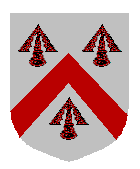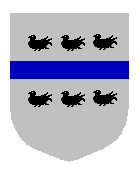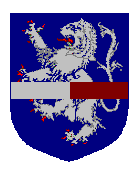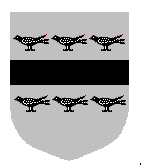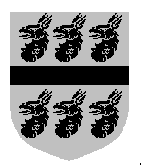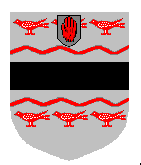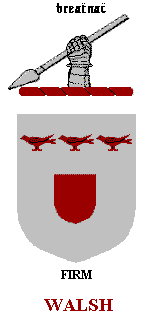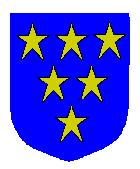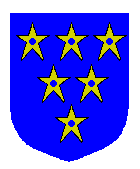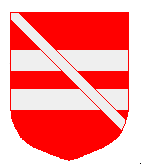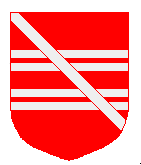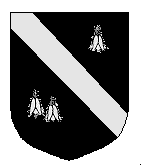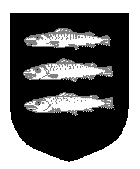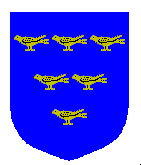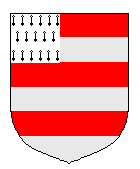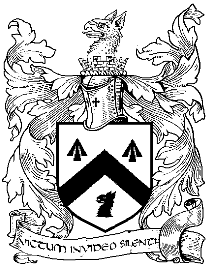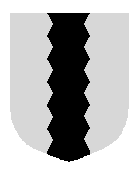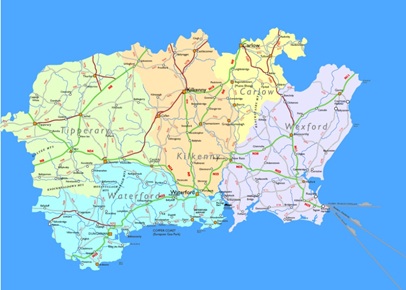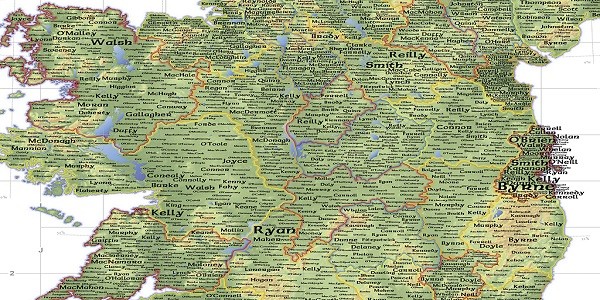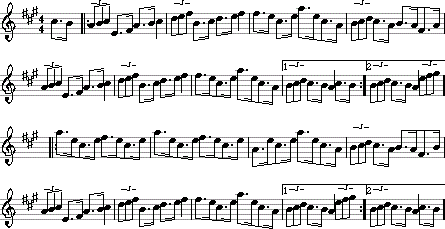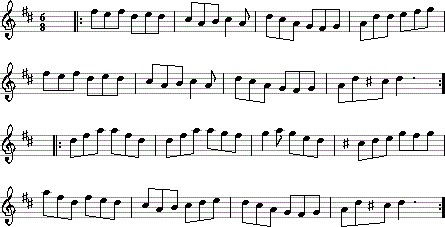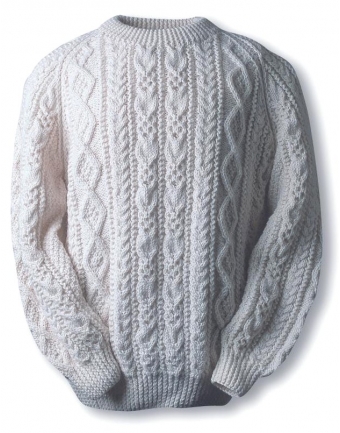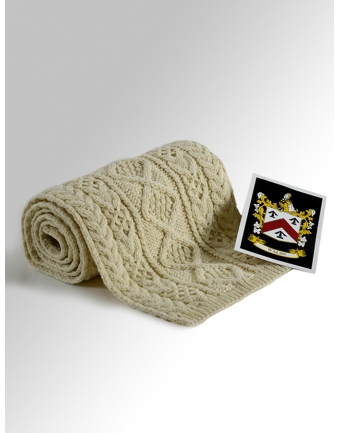![]()
"Semper et ubique fidelis".
"Transfixus sed non mortuus"
 Blason Walsh |
History Songs
http://walshclans.com/
Wikipedia Kilkenny Castle
|
Castlehale - Home of the Lord of the Mountain
|
LES OIES SAUVAGES |
Sommaire |
L'origine de cet envol
Après la bataille de la Boyne en 1690 et la chute de Limerick fin 1691 , l' Irlande est perdue pour le catholique Jacques II qui se réfugie en France. Il est suivi par les soldats qui ont combattu pour sa cause comprenant une grande majorité d'Irlandais. Par dérision, cet épisode est appelé Flight of the Wild Geese ( Envol des oies sauvages ) par les Anglais.
Patrick Sarsfield , premier comte de Lucan, le défenseur de Limerick obtint une capitulation honorable en octobre 1691 . Cet accord permettait aux soldats jacobites d'émigrer, 5 000 Irlandais embarquèrent immédiatement sur une flotte de secours française arrivée trop tard ils furent rejoints par 5 000 autres amenés par des bateaux anglais.
Patrick Sarsfield mourut le 21 août de blessures reçues à la bataille de Neerwinden le 19 août 1693 .
L'envol des oies sauvages
Les émigrés irlandais ont constitué des régiments de mercenaires dans de nombreux pays, qu'ils soient catholiques ou non.
Service de la France
Le principal contingent est celui qui s'est mis au service de la France en 1691 sous Louis XIV , alors que la Cour jacobite de Saint-Germain en Laye rassemble des milliers d'émigrés. Sous Louis XV les Irlandais se sont illustrés en particulier à la bataille de Fontenoy . Ils ont pris part également pour le compte de la France sous Louis XVI à la guerre d'indépendance américaine par deux régiments Dillon et Berwick .
C'est l' Assemblée nationale française qui a prononcé la dissolution des régiments irlandais (suspects d'être fidèles au Roi) en 1791. Le service des émigrés irlandais aura donc duré une centaine d'années de 1692 à 1792. Le comte de Provence , futur Louis XVIII, a prononcé en 1792 un discours de remerciement pour honorer la très longue fidélité des émigrés irlandais.
Article détaillé : Brigade irlandaise .Service de l'Espagne
Le régiment Irlanda 1 est constitué en 1698 et rejoint en 1709 par deux autres, Hibernia et Ultonia. En 1758, ils représentaient un total de 4 200 hommes.
Un régiment de dragons ( Mahony-Dragons ) a été envoyé en 1706 en Espagne avec des volontaires irlandais commandés par Daniel O'Mahony pour participer à la guerre de Succession d'Espagne qui a permis de mettre sur le trône d'Espagne Philippe V d'Espagne , un petit-fils de Louis XIV, puis de consolider son trône.
Par la suite d'autres descendants irlandais se sont mis au service de l'Espagne :
- Ambrose O'Higgins , (1720-1801), vice-roi du Pérou, père illégitime de Bernardo O'Higgins libérateur du Chili,
- Alejandro O'Reilly , (1722-1794), gouverneur de la Louisiane espagnole,
- Juan O'Donojú , (1762-1821), dernier vice-roi de la Nouvelle-Espagne (Mexique),
Service de la Russie
Les principaux serviteurs de la Russie sont :
- Peter de Lacy , (1678–1751), maréchal de camp russe,
- George Browne , (1698-1792), maréchal de camp russe.
Service de l'Autriche
On peut citer plusieurs officiers généraux :
- Maximilian Ulysses von Browne (1705-1757), maréchal de camp autrichien,
- François Maurice de Lacy , (1725-1801), maréchal de camp autrichien, fils de Peter de Lacy.
Service de pays lointains
Des descendants d'émigrants irlandais se sont retrouvés dans d'autres pays (Argentine, Chili...) où ils ont pris des parts importantes aux événements. On peut citer :
- Amiral William Brown (Guillermo Brown) (1777–1857), fondateur de la marine de l'Argentine, originaire du comté de Mayo,
- Bernardo O'Higgins , (1778-1842), libérateur du Chili,
- Bataillon Saint Patrick , irlandais défenseurs du Mexique en 1846-1848,
HAUT DE PAGE
FLIGHT OF THE WILD GEESE
The Flight of the Wild Geese refers to the departure of an Irish Jacobite army under the command of Patrick Sarsfield from Ireland to France, as agreed in the Treaty of Limerick on October 3, 1691, following the end of the Williamite War in Ireland. More broadly, the term "Wild Geese" is used in Irish history to refer to Irish soldiers who left to serve in continental European armies in the 16th, 17th and 18th centuries.
Contents |
Uniform and colonel's flag of the Regiment of Hibernia, mid-eighteenth century | Spanish service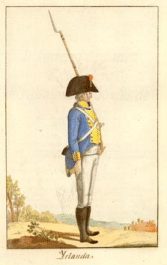
Picture displaying the uniform of the Regimiento de Infantería Irlanda |
The first Irish troops to serve as a unit for a continental power formed an Irish regiment in the Spanish Army of Flanders in the Eighty Years' War in the 1580s. The regiment had been raised by an English Catholic, William Stanley, in Ireland from native Irish soldiers and mercenaries, whom the English authorities wanted out of the country. (See also Tudor conquest of Ireland) Stanley was given a commission by Elizabeth I and was intended to lead his regiment on the English side, in support of the Dutch United Provinces . However, in 1585, motivated by religious factors and bribes offered by the Spaniards, Stanley defected to the Spanish side with the regiment. In 1598 Diego Brochero de Anaya wrote the Spanish King Philip III:
"that every year Your Highness should order to recruit in Ireland some Irish soldiers, who are people tough and strong, and nor the cold weather or bad food could kill them easily as they would with the Spanish, as in their island, which is much colder than this one, they are almost naked, they sleep on the floor and eat oats bread, meat and water, without drinking any wine."[1]
The unit fought in the Netherlands until 1600 when it was disbanded due to heavy wastage through combat and sickness.
Following the defeat of the Gaelic armies of the Nine Years' War, the " Flight of the Earls" took place in 1607. The Earl of Tyrone Hugh O'Neill, the Earl of Tyrconnell Rory O'Donnell and the Lord of Beare and Bantry, Donal O'Sullivan, along with many chiefs and their followers from Ulster, fled Ireland. They hoped to get Spanish help in order to restart their rebellion in Ireland, but King Philip III of Spain did not want a resumption of war with England and refused their request.
Nevertheless, their arrival led to the formation of a new Irish regiment in Flanders, officered by Gaelic Irish nobles and recruited from their followers and dependents in Ireland. This regiment was more overtly political than its predecessor in Spanish service and was militantly hostile to the English Protestant government in Ireland. The regiment was led by Hugh O'Neill's son John. Prominent officers included Owen Roe O'Neill and Hugh Dubh O'Neill.
A fresh source of recruits came in the early 17th century, when Roman Catholics were banned from military and political office in Ireland. As a result, the Irish units in the Spanish service began attracting Catholic Old English officers such as Thomas Preston and Garret Barry. These men had more pro-English views than their Gaelic counterparts and considerable animosity was created over plans to use the Irish regiment to invade Ireland in 1627. The regiment was garrisoned in Brussels during the truce in the Eighty Years' War from 1609–1621 and developed close links with Irish Catholic clergy based in the seminary there, creating the famous Irish Colleges — most notably, Florence Conroy.
Many of the Irish troops in Spanish service returned to Ireland after the Irish Rebellion of 1641 and fought in the armies of Confederate Ireland - a movement of Irish Catholics. When the Confederates were defeated and Ireland occupied after the Cromwellian conquest of Ireland , around 34,000 Irish Confederate troops fled the country to seek service in Spain. Some of them later deserted or defected to French service, where the conditions were deemed better. At the time of the Napoleonic Wars there were still three Irish infantry regiments in the Spanish army: Irlanda (raised 1698); Hibernia (1709); and Ultonia (1709). However in the later years of the existence of these units only the officers were Irish or of Irish descent, the men being predominantly Spanish or other foreigners. All three regiments were finally disbanded in 1815.
HAUT DE PAGE
French service
Main article: Irish Brigade
From the mid-17th century or so, France overtook Spain as the destination for Catholic Irishmen seeking a military career. The principal reason for this was that France was an ascendant power, rapidly expanding its armed forces, whereas Spain was a power in decline.
France recruited many foreign soldiers; Germans, Italians, Walloons and Swiss. André Corvisier, the authority on French military archives, estimates that foreigners accounted for around 12% of all French troops in peacetime and 20% of troops during warfare. [2] In common with the other foreign troops the Irish regiments were paid more than their French counterparts. Both Irish and Swiss regiments in French service wore red uniforms, though this had no connection with the redcoats of the British army. [3]
The crucial turning point came during the Williamite War in Ireland (1688–91), when Louis XIV gave military and financial aid to the Irish Jacobites. In return for 6000 French troops, Louis demanded 6000 Irish recruits for use in the Nine Years War against the Dutch. Five regiments, led by Justin McCarthy, Viscount Mountcashel formed the nucleus of the French Irish Brigade.
Later, when the Irish Jacobites under Patrick Sarsfield surrendered at the Treaty of Limerick, they were allowed to leave Ireland for service in the French Army. Sarsfield's "exodus" included 14,000 soldiers and 10,000 women and children. This is popularly known in Ireland as the "Flight of the Wild Geese". The main difference between the Irish Brigade and the Wild Geese was that the Brigade was formed up, and would serve France, but the Wild Geese comprised a group of individuals with similar aims that served in the armies of several countries, not just France.
Up until 1745, Catholic Irish gentry were allowed to recruit soldiers for France in Ireland. The authorities in Ireland saw this as preferable to the potentially disruptive effects of having large numbers of unemployed young Catholic men of military age in the country. However, after a composite Irish detachment from the French Army (drawn from each of the regiments comprising the Irish Brigade and designated as "Irish Picquets") was used to support the Jacobite Rising of 1745 in Scotland , the British realised the dangers of this policy and banned recruitment for foreign armies in Ireland. After this point, the rank and file of the Irish units in French service were increasingly non-Irish although the officers continued to be recruited from Ireland.
During the Seven Years' War efforts were made to find recruits from amongst Irish prisoners of war or deserters from the British Army. Otherwise, recruitment was limited to a trickle of Irish volunteers who were able to make their own way to France, or from the sons of former members of the Irish Brigade who had remained in France. During the Seven Years War the Irish Regiments in French service were: Bulkeley, Clare, Dillon, Rooth, Berwich and Lally. Additionally, there was a regiment of cavalry, Fitz James. By the end of the 18th century even the officers of the Irish Regiments were drawn from Franco-Irish families who had settled in France for several generations. While often French in all but name, such families proudly retained their Irish heritages.
Following the outbreak of the French Revolution the Irish Brigade ceased to exist as a separate entity on 21 July 1791 when the 12 non-Swiss foreign regiments then in existence were integrated into the line infantry of the French Army, losing their distinctive status, titles and uniforms. Many left the service in 1792 when Louis XVI was deposed, as their oath of loyalty was to him and not to the French people. Napoleon Bonaparte subsequently raised a small Irish unit composed of veterans of the Irish Rebellion of 1798. This "Irish Legion" was primarily composed of Cavalry units. Count Paul Francois O'Neill, the French 5th Comte de Tyrone and his two sons ,Jacques and Francois, all joined the Legion for four years.
Austrian service
Throughout this period, there were also substantial numbers of Irish officers and men in the armies of the Austrian Habsburg Empire, many of whom were based in Prague. The most famous of these was Peter Lacy, a Field Marshal in the Imperial Russian Army, whose son Franz Moritz Graf von Lacy excelled in the Austrian service. General Maximilian Ulysses Graf von Browne, the Austrian commanding officer in the Battle of Lobositz, was also of Irish descent. Recruitment for Austrian service was especially associated with the midlands of Ireland and with the Taaffe O'Neillan and O'Rourke gentry families However, Count Alexander O'Nelly (O'Neill) came from Ulster. He commanded the 42nd Bohemian Infantry Regiment 1734-1743. Much earlier, in 1634, during the Thirty Years' War, Irish officers led by Walter Deveraux assassinated general Albrecht von Wallenstein on the orders of the Emperor. In the 19th century, further Irish officers served in the Habsburg Empire, so Laval Graf Nugent von Westmeath and Maximilian Graf O'Donnell von Tyrconnell, who saved the life of Emperor Franz Joseph I during an assassination attempt. Gottfried von Banfield finally became the most successful Austro-Hungarian naval aeroplane pilot in the First World War.
Swedish and Polish service
In 1609, Arthur Chichester, then Lord Deputy of Ireland, deported 1300 former rebel Irish soldiers from Ulster to serve in the Protestant Swedish Army. However, under the influence of Catholic clergy, many of them deserted to Polish service.
The Catholic Irish troops in Protestant Swedish service changed sides during a battle against largely Catholic Poland, the only European country with statutory freedom of religion at the time. The Irish then served in Polish service for several years during the Polish–Muscovite War (1605–1618), until their wages went unpaid.
Italian service
Despite being less studied, the ancient and traditional "mestiere delle armi" in Italy was also a well-known profession by the Irish. The "tercio" of Lucas Taf (around 500 men) served in Milan towards 1655. The Army of Saboya included also Irishmen, but in Italy the Irish were organized basically by the Spanish administration. In 1694 another regiment in Milan was exclusively composed by Irishmen. Around the 3-4% of a total of 20.000 men were Irish in the Spanish Army of Milan. It is not a high figure, but it was important as regards quality. In this context, James Francis Fitz-James Stuart (1696-1739), Duke of Berwick and of Liria is just one example of this success. He began to serve the Monarchy in 1711 and succeeded in becoming General Lieutenant (1732), ambassador in Russia, in Austria and in Naples, where he died.[5] In 1702 an Irish grenadier company led by Francis Terry entered Venetian service. This company of Jacobite exiles served at Zara until 1706. Colonel Terry became the Colonel of a Venetian Dragoon Regiment, which the Terry family mostly commanded until 1797. Colonel Terry's Dragoons uniforms were red faced blue in the Irish tradition. The Limerick Regiment, of Irish Jacobites, transferred from Spanish service to that of the Bourbon king of Sicily in 1718.
HAUT DE PAGE
End of the Wild Geese
Irish recruitment for continental armies dried up after it was made illegal in 1745. In 1732 Sir Charles Wogan indicated in a letter to Dean Swift that 120,000 Irishmen had been killed and wounded in foreign service "within these forty years", [6] with Swift later replying:
"I cannot but highly esteem those gentlemen of Ireland who, with all the disadvantages of being exiles and strangers, have been able to distinguish themselves by their valour and conduct in so many parts of Europe, I think, above all other nations."[7]
It was some time before the British armed forces began to tap into Irish Catholic manpower. In the late 18th century, the Penal Laws were gradually relaxed and in the 1790s the laws prohibiting Catholics bearing arms were abolished.
Thereafter, the British began recruiting Irish regiments for the Crown Forces — including such famous units as the Connaught Rangers. Several more Irish units were created in the 19th century. By 1914 specifically Irish infantry regiments in the British Army comprised the Prince of Wales's Leinster Regiment, the Royal Dublin Fusiliers, the Irish Guards, the Royal Irish Regiment, the Royal Inniskilling Fusiliers, the Royal Irish Rifles, the Royal Irish Fusiliers, the Connaught Rangers and the Royal Munster Fusiliers. With the creation of the Irish Free State in 1922 five of the above regiments were disbanded, with most of the remainder undergoing a series of amalgamations between 1968 and 2006. The United Kingdom still retains three Irish regiments: the Irish Guards, the Royal Irish Regiment, and the London Irish Rifles.
See also
- Battle of Pensacola (1781)
- Count Joseph Cornelius O'Rourke
- Early Modern Ireland 1536-1691
- Ireland 1691-1801
- The Wild Goose
- Saint Patrick's Battalion
- Great Britain in the Seven Years War
Footnotes
|
- French Revolutionary Infantry 1789-1802, Osprey 2004,ISBN 1-84176-660-7
- Hennessy, Maurice N. The Wild Geese, The Devin-Adair Co., Old Greenwch, CT, 1973
- Henry, Graine. The Irish Military Community in Spanish Flanders, Dublin 1992
- O Ciardha, Eamonn. Ireland and the Jacobite Cause, Dublin 2002
- O'Hart, John. Irish Pedigrees, Volume 2. Dublin: M'Glashan & Gill, 1878; p. 653
- Simms, J. G. Jacobite Ireland, London 1969
- Straddling, R. A. The Spanish Monarchy and Irish Mercenaries, Dublin 1994
External links
THE WALSH SURNAME |
WALSH DE SERRANT
|
 |

|
Le Raccordement Français
1754-1782: François-jacques Walsh de Serrant (1704-1782)
1782-1817: Antoine Joseph Philippe Walsh de Serrant (1744-1817)
1817-1825: Édouard Gauthier Walsh de Serrant (1771-1825)
1831-1836: Théobald Gauthier Walsh de Serrant (1796-1836)
1836-1843: Gaston Jean Philippe Walsh de Serrant (1824-1843)
1843-1894: Ludovic Charles Walsh de Serrant (1831-1894)
1894-1895: Henry Joseph Albert Walsh de Serrant (1823-1895)
1895-1912: Paul Walsh de Serrant (1827-1912)
1912-1933: Edgard Walsh de Serrant (1856-1933)
1933-1967: Patrice Walsh de Serrant (1886-1967)
1967-2002: Albéric Walsh de Serrant (1920-2002)
2002: Paul-Antoine Walsh de Serrant (1959- )
WALSH OF BALLYNACOOLY
The Walshs of Ballynacooly, County Kilkenny, Ireland were descended from the Walshs of Castlehale.
Among the sons of Walter Walsh of Castlehale (died 1619) and Ellice Butler was a third son named James Walsh.
James of Ballynacooly was born in the late 1500's and married Anne, the daughter of John Tobin of Cumshinagh.
Their son, Richard Walsh of Ballynacooly, who was still living in 1638, married Elizabeth Sutton, daughter of Thomas.
The eldest son of Richard and Elizabeth, Patrick, was disinherited (for reasons unknown to this author) from the family estate, and in turn another son,
John Walsh of Ballynacooly succeeded his elder brother Patrick. John married Mary Schattick, daughter of Thomas,
and it was their son James Walsh of Ballynacooly who lived to see his estates forfeited in 1665 after the time of Cromwell's invasion.
James, mentioned at the top of this page, was a Captain in the French navy, having adopted that country following the defeat of Charles II.
A POSSIBLE WALSH DE SERRANT GENEALOGIE
1 Philip Bretnagh, a nephew of Rees ap Griffith, Prince of South Wales 2 Howel (or Hoyle) Bretnagh, who built Castle Hoel 3 Griffin Bretnagh 4 Adam Bretnagh (1st degree) m. Catherin BURKE 5 Walter Bretnagh !1327 of Castelhowel m. Cecilia O'DEMPSIE 6 Robert Bretnagh of Castelhowell m. Eleanor O'CAROLL 7 Philip Bretnagh of Castelhowell m. Mary O'CONNOR 8 Walter Bretnagh of Castelhowell m. Catherine BUTLER 9 Edmund Bretnagh Walsh +1443 m. Joan BUTLER of Poulisherry 10 Robert Bretnagh Walsh +10/12/1501 m. Catherin POWER of Donhill 11 Walter Walsh of Castelhowell +1537 12 Edmund Bretnagh Walsh, m. 1° ??, m. 2° Margaret FITZGERALD +1560, d. of the earl of Kildare's second son 13 Robert Walsh, lord Shancahir +18/10/1557, m. Helen Tobin of Cumshinagh 14 Walter Walsh +1619, m. Ellis Butler, d. of 1st Viscount of Mountgarret 15 James Walsh of Ballynacooly, m. Anne Tobin of Cumshinagh 16 Richard Walsh of Ballynacooly, m. Elizabeth Sutton 17 John Walsh of Ballynacooly, m. Mary Schattick 18 James Walsh of Ballynacooly, m. Margaret Walsh of Carrickmines 19 Philip Walsh +1708, m. Anne Whyte 20 Anthony or Antoine, Earl Walsh +1763, m. Marie O'Sheill of Nantes 20 James Francis or François Jacques Walsh, 1st Comte de Serrant +1782, m. Mary HarperSOURCES:
A Royalist Family and Charles Edward Stuart, Edinburgh, William Brown, 1904
HAUT DE PAGE
Le Raccordement Français
WALSH 1170-1690The Walsh relationship with the Cambro-Normans (from Wales) can be seen to have been the determining factor in their acquisition of property in Ireland. Their good fortune and their reverses are seen to have been bound up with the struggles of the Fitzgeralds, Butlers, and Burkes for pre-eminence in power and possession, and with the desperate efforts of the English governors to hold a small area around Dublin [the Pale] against the pressure increasingly exerted by the native Irish. From the very first year of their arrival in Ireland the Walshs, and all their associates, were regarded as English by the Irish, and as Irish by the English, and after five centuries this was still the position by reason of the continuous operation of two conflicting tendencies. English law was cleverly designed to keep them at enmity with the old Irish; yet the conditions in which they lived conduced to friendship and intermarriage with their Irish neighbors. There was much in common between the early Welsh and the Irish. They were of the same Gaelic stock, and had the same system of selecting rulers by tanistry. Both would set aside the eldest son of a chief from the succession for even a physical blemish, both took hostages from defeated enemies, and both made a practice of blinding possible rivals. The Welsh were also, as the Irish were not, guilty of mutilation for the same object. In times of trouble the Welsh chieftains found refuge in Ireland, and the Irish chiefs in trouble were welcome in Wales. Of all who went to Ireland following the Cambro-Norman Invasion, those of Welsh blood were most likely to accommodate themselves with ease to the new conditions. As to the family origin of the first who went to Ireland, it seems clear that they were drawn from the leading houses of Wales. Ririd, who settled in Dublin County, was a son of Owen Gwynned, Prince of North Wales; and a brother of David, Owen's son and successor. There is some indication that David, son of this David, also went there. Philip FitzRhys was clearly of the house of South Wales. Philip and David "Walsh", who are mentioned in the early histories, and for whom it is claimed that both Strongbow and Raymond le Gros were their uncles, appear to be with the Geraldines rather than with the de Clares. In the early years they were very close to the Fitzgeralds, and Meyler Fitz Henry was their constant friend. Other families of le Waleys (Walshs) undoubtedly descended from Cadwallader, brother of Owen Gwynned, and Alicia de Clare, but the indications are that they came later to Ireland. Read more at Exploring Walsh Connections in Wales. When Henry II arrived at Waterford, late in October, 1171, Dermot McCarthy of Ireland went of his own accord to pay homage, give hostages, and agree to pay tribute for his kingdom. In 1173, the invaders broke out of their initial Leinster foothld and invaded McCarthy's territory at Lismore. It was in escaping with their spoils that they met the Danes of Cork, where Philip 'Walsh' was the victor (see Walsh of the Mountain). At about the same time Raymond le Gros defeated McCarthy on land. Then, in 1175, after the siege of Limerick, where David Walsh attracted attention, Raymond was appealed on behalf of Dermot McCarthy, who had been imprisoned by his son Cormac. Dermot's envoys, in imploring Raymond's aid, promised him large gifts. By a sudden move on Cork, Raymond succeeded in restoring Dermot to his kingdom, and he was given by the grateful Dermot lands of large tracts in Kerry. Ultimately, through the favor of Raymond, and marrying into the McCarthy families, David Walsh obtained land in Kerry and Tipperary, and Philip Walsh obtained mountain land in Waterford and Tipperary. There was nothing revolutionary about these McCarthy marriages with young men of royal blood of Wales. There is a natural tendency to ascribe to David and Philip Walsh a patriarchal relation to the whole family of Walsh; but obviously that is a conclusion difficult to justify. The WALSH name, as it appears in the records in various places throughout Ireland, at first is seen as Wallensis, then as Waleys, then in the Irish form Brenagh, and finally as Walsh, Brannagh, et al. Read more about Walsh Surname Origins. It is more than a little curious how these early arrivals from Wales seemed to gravitate to the mountains. It was natural enough, no doubt, 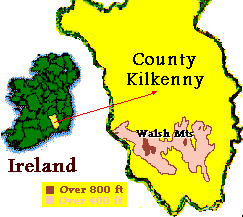 that they should like the kind of country they came from, but the more likely explanation is that they were chosen, in those early fighting years, for their value in mountain warfare. A relief map of Kilkenny shows a great level plain between two ranges of hills. On the plain there were no Walshs; the mountain country to the south was filled with them. Castlehale itself stood on the northern edge of the mountain land, with a wide outlook across the plain. It was the same in Dublin and in Wicklow. For five full centuries the Walshs were in the mountains there, posted at points commanding the mountain passes. They were in the Comeragh Mountains in Waterford, and had their castles on the mountain flanks. They were on Carrickbyrne in Wexford. They were in the mountains of Kerry. They thrived in these places and were a sturdy stock. that they should like the kind of country they came from, but the more likely explanation is that they were chosen, in those early fighting years, for their value in mountain warfare. A relief map of Kilkenny shows a great level plain between two ranges of hills. On the plain there were no Walshs; the mountain country to the south was filled with them. Castlehale itself stood on the northern edge of the mountain land, with a wide outlook across the plain. It was the same in Dublin and in Wicklow. For five full centuries the Walshs were in the mountains there, posted at points commanding the mountain passes. They were in the Comeragh Mountains in Waterford, and had their castles on the mountain flanks. They were on Carrickbyrne in Wexford. They were in the mountains of Kerry. They thrived in these places and were a sturdy stock. Much later in the 17th century, Cromwell's armies were in Ireland and methodically removed all vestiges of the Walsh landholders. In Waterford, Sir Nicholas Walsh made a good fight and was killed. In Kilkenny, Walter Walsh fought, Castlehale was destroyed, his men were massacred and buried in a single pit, and he died sitting at table. In Dublin, Carrickmines was stormed and blown up, its garrison massacred, and Theobold, a "captain of the Irish" attainted. The head of the Walshs of Rathronan in Tipperary was in the fight, and so were the Walshs of Kerry. They all lost everything. Cromwell was very thorough. The Cromwell confiscations in Kilkenny County in 1653 accounted for 18,000 acres of Walsh property, of which 14,000 was that of the Baron of Shancaher in the Walsh Mountains. Another 1500 acres in Kilkenny and 12,000 in Waterford were the property of Walsh of Piltown, who died in the fight for his home. Castle Hale, the seat of the Lords of the Mountain, and Piltown, chief seat of the other family, have disappeared even from the map. Another Waterford family, called "Walsh of the Island", prosperous merchants in Waterford City, also lost, besides their business, about 3000 acres of land, of which 1200 were in their country seat at Ballygunner. Still another family had large possessions in eastern Cork, near Youghal, and others in eastern Kerry. Other thousands of acres changed hands in Dublin, Wicklow, Kildare, Wexford, and though less is known, in western Cork and Tipperary. For further reference see Confiscations. About the year 1800 a gentleman named Tighe made a statistical survey of the county of Kilkenny. He writes, "The most considerable dairies are in the Welsh Mountains, in Irish sliegh "Brenoch", and are supposed to take their name from the family of Welsh, or Walshe, by whom a large tract of country was formerly possessed. 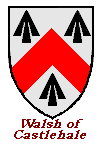 The first of this family is said to have come to Ireland with FitzStephen and his successors, and to have had afterwards eighteen houses or castles in this district..." The first of this family is said to have come to Ireland with FitzStephen and his successors, and to have had afterwards eighteen houses or castles in this district..." "To the Walshs belonged, probably, the castles of Inchicaran, CastleHale, Earlsrath, Munshall's Court, Ballynony, Ballinlea, Kilcraggan, Ballybokan, Corbally, Castlegannon, New Castle, Ballybruskin, Knockmoylan, Lismateige, Ballybregan, Ballynacooly, Grange Castle, and some others." Further reference: Place Names of the Family of Walsh. Source: Notes taken from the book "WALSH 1170-1690" A quote from a former "Welcome to Medieval Kilkenny" web site said... "Scenic Drive - Driving through Piltown takes one through one of the most scenic areas in all Kilkenny. As one drives from Templeorum to Mullinavat across the southern slopes of the Walsh Mountains the views of the Suir Valley are truly spectacular and extensive and this is also the route reputedly taken by Cromwell on his march to Carrick from New Ross." The preceding article was compiled by Dennis J. Walsh, © 2009 HAUT DE PAGEFOLKLORE WALSH EARLY WALSH HISTORY IN IRELAND |
|
The Walsh Arms come in a few varieties. Among others, the Walsh(e) families established themselves as landed gentry at Castlehowel (Castlehale) in County Kilkenny, at Ballykilcavan in Queen's County, at Ballyrichmore in County Waterford, and also at Bray and Carrickmines in County Dublin. Walshes were also established in Berkshire, Gloucestershire, Worcestershire and elsewhere in Great Britain. Read more at Origins of the Walsh Surname Note there is no such thing as a 'coat of arms for a surname'. Many people of the same surname will often be entitled to completely different coats of arms, as shown on this page, and many of that surname will be entitled to no coat of arms. Coats of arms were granted to individuals. For any person to have a right to a coat of arms they must either have had it granted to them or be descended in the legitimate male line from a person to whom arms were granted or confirmed in the past.
Variations on the County Kilkenny Design Meaning -- Tranfixus --- Formal --- Large Formal --- Breatnac --- Fanningstown Note: An interesting comparison of the Walsh arms are those of the name of an Archer family, who settled in Kilkenny about the reign of King John, their arms described as "Argent, on a chevron Gules, between three pheons Sable (points downward), three mullets Or." (Source: Burke's General Armory). Similar arms existed for the Archers of Cornwall.
|
Historic Placenames of the Family of Walsh |
 |

|
HISTORIC PLACENAMES
Castlegannon
(Derrynahinch parish, Kilkenny)In Irish "Cailean Gheannain", or Gannon's stone fortress, is a townland covering 970 acres in Derrynahinch parish of County Kilkenny.
This caiseal and Castlebanny were hill fortresses of the Walshes. Kilcredy, i.e. Cill Chreide, St. Crede's church now in ruins is in Castlegannon lower hamlet (Kilcredy is not a townland) and there is also an upper hamlet and one small rath.
Carrigan states that Kilcredy is probably one of the oldest churches in the Diocese of Ossory and that it was appropriated to the Priory of Kells early in the 13th century.
Carriag mhor was a wooded area until 1942 and the Coill lia, the grey wood, and Sliabh an cheannai, the castle-jobber's mountain, are local names; also Sean na Sidheog's corner named after a local queer character.
The Roadstone Company is now working the Gray Wood quarry.
Source: Place Names of County Kilkenny - E.O. Kelly, KAS 1985
Castlehale
(Castle Hoyle or Hoel or Howel)Castlehale, in the Barony of Kells, is said to have been a square castle flanked by four towers. It stood at the northern end of the mountain, overlooking the plain northeast of Kilmaganny. On the distant northern horizon other mountains are in view.
First constructed by Howel (or Hoyle) Walsh (aka Haylen Brenagh) in the thirteenth century, it deserved to be ranked among the chief residences of the county Kilkenny.
Appearing in arms against Cromwell, circa 1650, the Walsh clan there was defeated. Many were executed on the spot and buried at the foot of the hill near the castle.
Later, in making a road in the area the late Mr. G. Reade (circa 1800) discovered the bones, and caused a sweep to be formed, which marks the place.
Since that time none of the family have existed as landed proprietors, but the name is frequent among the country people.
Source: The Lament for John MacWalter Walsh by J.C. Walsh
Read more at The Legacy of Castlehale
Castlemorris
(Aghavillar parish, Kilkenny)Diore lia, a grey wood. Area 512 acres. The Morris family got a grant of land here in 1653, almost certainly Walsh possessions before the Confiscations, as the Morrises and Reades got grants of the Walsh lands in old Rossaney at this time....
Source: Place Names of County Kilkenny - E.O. Kelly, KAS 1985
Clonassy
(Kilmacow parish, Kilkenny)Cluain Easa, meadow of the Assy river, area 1,054 acres.
The Assy or Poulanassy river rising in Barnadown, Aughavillar parish, flows southwards through Harristown and Garrygaug joining Derrylecky river here at Clonassy.
The waterfall on the river must have given its name to this and to Poulanassy townland.
Carrigan states that the ancient church called Sean-Eaglais, stood "by the stepping stones of Assy river" and that the church and churchyard were uprooted in 1850;
also that a pillar stone north of the church on the by-road to Garrygaug is known as Cloch an tsaidiura, the soldier's stone, and also as Cloch an phalmaire, the pilgrim's stone.
Only traces of the foundations of Clonassy castle, owned by Robert Walshe, Lord of the Mountain, who was slain at the Siege of Limerick 1690, remain in a field called Pairc an chaisleain.
Robert was one time M.P. for Kilkenny.
Source: Place Names of County Kilkenny - E.O. Kelly, KAS 1985
Cloone
(Kilmoganny parish, Kilkenny)Cluain, a meadow. Area 374 acres. The name is recorded in 15th century documents as Cluain Stallain and as Cluain Sheain Bhhui, believed to be one of the Walshes.
Cloone castle, in ruins, was Walshe property to 1446, then given to Jerpoint Abbey and to the Ormonde family at the suppression of the abbey.
Source: Place Names of County Kilkenny - E.O. Kelly, KAS 1985
"Clone Castle, the revenues of which were given to Jerpoint Abbey, was nevertheless known as Cloone MacShaneboy or Cloone of the son of yellow John (Walsh)."
Source: Statistical Observations Relative to the County of Kilkenny - William Tighe 1802
The early 19th century maps of Aher and Clements corroborate the former name of the townland of Clone as Clanmacshaneboy or Cluone.
Derrylecky
(Derrynahinch parish, Kilkenny)Doire leacach, the flaggy oak-grove, covers an area of 827 acres of Derrynahinch parish. This district is mostly mountain and rough pasture usually called the Derrylecky Bogs.
The Old Dairy here was a mountain booley of the Walshes, Derrynahinch. Coolaun mountain adjoins the bogs eastward and Ucht na gcearc, the hill-brow of the grouse is a subdivision.
Fields in this area are Carraig na mbuachailli; Carraig na sionnach; Carraig Anderson; Moin ghiuis, the fir bog; and Poet O'Neill's field.
The late William Henebry recalled twenty houses here 60 years ago -- only two now.
Source: Place Names of County Kilkenny - E.O. Kelly, KAS 1985
Derrynahinch
(Derrynahinch parish, Kilkenny)Doire na hinse, or oak-grove of the holm, covers an area of 992 acres in the parish of Derrynahinch.
It is given as Ath Dhoire na hInse in the Red Book of Ossory. The ancient church, in ruins, is in the Church field beside Derrynahinch House, the home of the Walshe family over a long period.
St. Mocheallog was patron of the church and two holy-water fonts belonging to it are still in Ballyhale church. There is a well called Tobar geal, a clear spring.
Caureisk is a subdivision of Upper Derrynahinch where there was an ancient enclosure of eight upright stones with a circumference of 60 yards, now long destroyed,
called Leaba Dhiarmada agus Grainne and locally known as Long Darby's grave. Fields in the area are Coill Bheag, a little wood, and Cul Thaidhg, Tadg's hill.
Source: Place Names of County Kilkenny - E.O. Kelly, KAS 1985
HAUT DE PAGE
HISTORIC PLACENAMES
Earlsrath
(townland in Kilbeacon parish, Kilkenny)At Earlsrath, Rath Iarla, Earl's or de Earley's rath, near Kilbeacon in the parish of Mullinavat, there was "a very large fort, oblong and surrounded by a deep fosse, formerly filled with water, with a bank about 20 feet high, formerly faced with square stones." The area was about 75 yards by 55.
Some historians claim that this was the scene of a great battle, long before the Norman invasion (circa 1170).
It was a spot that had to be controlled by those who had interests to protect above and below it, and was doubtless one of the first Walsh strongholds.
The Walsh owner managed to save it at the time of the confiscation (circa 1653). The property was about 2,000 acres in 1800 when Mary Walsh, a widow, had it.
The last of the family, Miss Alice, died in 1884, aged 91, after endowing a convent in Mullinavat.
Source: History of the Diocese of Ossory - Rev. Dr. Carrigan, 1905
and The Lament for John MacWalter Walsh by J.C. Walsh
Garrygaug
(Muckalee parish, Kilkenny)Garrai Dhathog, Little David's garden, area 494 acres. This is the name given in 16th century documents. Muckalee ancient church, almost levelled, and the churchyard are here.
St. Canice was the patron and a pattern was formerly held in his honour in the church field. Carrigan states that a Walshe castle once stood in the townland but there is now no trace of it.
Knock is a subdivision and there is a well called Tobar an bhile, well of the tree.
Source: Place Names of County Kilkenny - E.O. Kelly, KAS 1985
Grange Castle
(Mooncoin parish, Kilkenny)In the parish of Mooncoin, Grange Castle was the seat of another of the younger branches of Walsh.
Pierce Walsh was given the Abbey of Owney, in Limerick, when Henry VIII decided that the monasteries should be taken into the King's hand.
This castle at Grange was a square keep, roughly built, and very old, with walls five and a half feet thick.
Source: The Lament for John MacWalter Walsh by J.C. Walsh
Grange
(Pollrone parish, Kilkenny)Grainseach, a grange, area 639 acres. The ruined castle at Grange village belonged to the Walshes of the Mountain. Fields are Carraig an lin(O); Coniceir, a rabbit warren; and the Culog, back land.
Source: Place Names of County Kilkenny - E.O. Kelly, KAS 1985
Harristown
(Muckalee parish, Kilkenny)Baile hAnnnrai, Henry or Harry's homestead, area 629 acres. This is an upland district (the highest point 600 ft.), west of the main Kilkenny/Waterford road and is Pobal an Bhreathnaigh, the territory of the Walshes. The Breathnach Mor forfeited this townland and Kilmog in 1653. Our greatest cromleac, Leac an Scail, the warrior's tombstone, is here on the Kilmogue border.
It is a simple structure with a sloping cap-stone resting on three upright pillar stones to an elevation of 18 feet at the highest point.
The cap-stone is 14 feet long, 11 feet wide and 2 1/2 feet thick with an estimated weight of 25 tons.
It is attributed to the Neolithic period but nothing is known of it other than its name. Cluain leacht, the cairn meadow, is the name of the field by the cromleac, and other fields are Ban ard; Currach; Currach Mor; Garrai aitinn; Gleann an tsruthain, the stream glen; Moin Bheagl; Moin fhada; Pairc mhor; Seangharrai and Tulan na ngabhar, the goat's knoll.
There are two raths.
Source: Place Names of County Kilkenny - E.O. Kelly, KAS 1985
Inchacarran
(Killahy parish, Kilkenny)Inse an charainn, or holm of the stone-pile, covers an area of 118 acres in Killahy parish of Kilkenny.
The destroyed structure, close to Mullinavat and near the angle of the Assy and Black rivers is said to have been the residence of Sean MacBhaiteir Breathnach (1580 - 1660), aka John MacWalter Walsh, Bard of the Walshe Mountains and one of the most important and powerful gaelic poets of that age.
In 1664 it is recorded that Inchacarran was given to a Cromwellian. John MacWalter had a dance tune called ''Tatter Jack Walsh'' named after him. He was buried in Kilbeacon cemetery.
The site of the original castle was located in the field beside the parish GAA grounds.
Source: Place Names of County Kilkenny - E.O. Kelly, KAS 1985
William Tighe described Inchicarin in his 1802 Statistical Observations as "one of their [the Walses] principal residences was at Inchicaran in the valley opposite to Millinivat, where the foundations remain of an oblong court, and a square building; a large fosse without could be filled with water by a rapid stream from an adjoining glen.
Jerpoint Abbey
(Co. Kilkenny)The church harbours some very fine sculptured tombs including those of Katerine Poher and Robert Walsh (died 1501).
To Robert Walsh was ascribed the title of "Baron of Shancaher", or of Oldcourt.
His parents, Edmund Walsh and Johanna le Botiller, were also buried at Jerpoint.
On March 9, 1446, Robert's grandfather, Richard Walsh, made a grant to the Abbey of Jerpoint of his lands of Clone, in the barony of Kells,
and Ballycheskin in Knocktopher, thereby enabling the Cisternian monks to build the tower of the Abbey.
Source: The Lament for John MacWalter Walsh by J.C. Walsh
HAUT DE PAGE
HISTORIC PLACENAMES
Kilcraggan
(Ballytarsney parish, Kilkenny)Not far from Waterford, Kilcraggan was another Walsh branch family residence.
How long they had been at this place can be inferred from the fact that John Walsh, son of William, son of John,
son of William, son of Adam, was one of the constables of the barony of Iverk in the year 1608.
Source: The Lament for John MacWalter Walsh by J.C. Walsh
Kilcreggan
(Ballytarsney parish, Kilkenny)Cill creagain, church of the rocky land. Area 370 acres. There is a field called Croichtin in which Carrigan states the ancient church and churchyard stood,
both long obliterated. Kilcraggan ruined castle belonged to the Walshes, Lords of the Mountain. Kilcraggan village is north of the road and avenue leading to Silversprings House.
Other fields are Garrai Mhac Oda; Pairc an chrainn; and Tobar na hadhairce, well of the horn, but perhaps should be Tobat na deirce, well of the alms.
Source: Place Names of County Kilkenny - E.O. Kelly, KAS 1985
Kilgobbin
(Kilgobbin parish, Co. Dublin)Kilgobbin Castle, a tall, narrow structure entirely devoid of bawn or outworks, which might be described as a fortified dwellinghouse rather than a castle.
It originally belonged to the Walsh family, from whom it passed by forfeiture or otherwise, in the reign of Charles I, into possession of Sir Adam Loftus, of Rathfarnham.
A branch of the Walsh family of Carrickinines, the Harolds' comrades in the protection of the Pale, later on settled on the lands of Kilgobbin.
To that family was doubtless due the erection of the castle.
Amongst its successive occupants were, in 1482 Morris Walsh, in 1509 Pierce, son of Morris Walsh; in 1578 John Walsh, in 1599 Edmond Walsh, in 1615 Christopher Walsh, and in 1620 Patrick,
alias Pierce Walsh, a son of John Walsh, in whose time a court was held by order of the Exchequer at Kilgobbin, and certain persons were found guilty of non-attendance
by a jury composed of the Walshes and their neighbours.
Sources: 'The Neighbourhood of Dublin' by Weston St. John Joyce, and A History of the County Dublin by Francis Elrington Ball.
Kilmacoliver
(Tullahought parish, KilkennyIn Tullahought, County Kilkenny, was the Castle of Kilmacoliver, the wood of the son of Oliver. "It stood on the north-east edge of a high rocky peak.
The site was well chosen for an old feudal keep consisting of an acre of land rising to a considerable height with sides almost perpendicular, except on the south-east.
This castle belonged to the Walshs, Lords of the Mountain, till 1374 when it passed on to the Ormond family. It was destroyed long ago, and even the tradition of its existence has almost died out."
Source: History of the Diocese of Ossory - Rev. Dr. Carrigan, 1905
Kilmoganny
(Kilmoganny parish, Kilkenny)A Civil Parish in County Kilkenny in the Barony of Kells, 5 miles southwest of Knocktopher on the road from Kilkenny City to Carrick-on-Suir.
During the parliamentary war a party of Cromwell's troops had a skirmish here with the Walsh party, of Castlehall, which they defeated, and seized the estate.
There are remains of castellated residences of the Walsh family at Castlehill, Clone, and Kerehill [Currahill].
Source: A Topographical Dictionary of Ireland - Samuel Lewis (1837)
Kilree
(Kilree parish, Kilkenny)Cill Ruidhche, St. Ruidhche's church. Area 413 acres. The church, in ruins, dedicated to St. Brigid, is recorded as dating from the 10th century on the Board of Works notice affixed to it.
There are monuments dating back to the 14th century in the adjoining churchyard and one with symbols of the Passion on it.
The Cloigteach or round tower standing at its original height at the church is a familiar landmark known as the Steeple.
In a field adjoining, 60 yards west of the church stands a Celtic high cross with circle and interlace ornamentation stated to date back to the 9th century.
Tobar Bride is on the northern boundary in Kells townland. All the setting is in a quiet, lonely district of very rich land. Tobar an rios is listed in Carrigan's notes but the location is not known.
The Walshes lost this property to Cromwell and were transferred to Connaught in 1654. The present residence of the Fleming family is believed to be the old home of the Walshes.
The original flagged kitchen floor there resounded well to a half-sets.
Source: Place Names of County Kilkenny - E.O. Kelly, KAS 1985
Knockmoylan
(County Kilkenny)Cnoc Mhaoldubhain, or Maoldubhan's hill, covers an area of 1,512 acres in Kilkeasy parish and in Lismatigue parish of County Kilkenny. ...
There is a Walshe castle site below the village ...
Source: Place Names of County Kilkenny - E.O. Kelly, KAS 1985
Knocktopher Barony
(County Kilkenny)Cnoc an Tochair, of which Knocktopher is the English phonetic spelling, means the hill of the causeway.
This barony of 46,765 acres stretches from Stonyford village in the north to Rossinan civil parish in the south and from Jerpoint Church in the east to Aghaviller townland in the west.
The northern half forms part of the fertile central plain and the southern portion is good upland arable land.
The hill area around Lismatigue is the middle of Sleibhte an Bhreatnaigh, the Walsh Mountains, where the Anglo-Norman family settled and erected many castles.
Source: Place Names of County Kilkenny - E.O. Kelly, KAS 1985
Knocktopher Castle
(Knocktopher, County Kilkenny)James, the noble Earl of Ormond built an abbey at Knocktopher in 1356, and he died in his castle of Knocktopher in 1382, 11 years before his succesors bought Kilkenny Castle.
James may fairly be supposed to have built the Knocktopher Castle which was his pride.
What we can infer from the lament is that Geoffrey Brenagh (aka Walsh), head of one of Ormond's warrior bands, and at the same time his most extensive tenant in Knocktopher barony, built it for him,
sharing his pride in the achievement, and very probably holding it for him until the Powers (le Poer) came along, as favored family connections, as before long they did.
(Source: The Lament for John MacWalter Walsh, J. C. Walsh, pp. 120)
Lismatigue
(Lismatigue parish, Kilkenny)Lios Mac Thaidhg, Mac Teigue's fort. Only the outline of the foundation of the ancient church which Carrigan states belonged to the Priory of Kells prior to the Reformation now stands in the disused churchyard.
The site is in Pairc an Teampaill and Lismatigue castle, known as caislean ban, and now only a site is in the Castle field. Local tradition holds that the Bard of the Walshe Mountains,
referred to under Inchacarran townland, lived here at a time and composed the elegy of Oliver Grace of Courtown, Tullaroan, who died 1604...
Source: Place Names of County Kilkenny - E.O. Kelly, KAS 1985
Little Sodbury Manor
(Gloucestershire, England)Sir John Walshe at Little Sodbury Manor was a famous warrior who had been knighted as the king's champion at the coronation of Henry VIII.
John and Lady Anne Walshe were the masters of Little Sodbury, the estate where William Tyndale, who later translated the Bible into English,
worked for two years (circa 1521) after leaving Cambridge, probably as a tutor to their two young sons.
The Manor was an important house - Henry VIII and Anne Boleyn stayed here in 1535. In 1556 a severe thunderstorm killed five of the six Walshe children
when "a sulphurous globe" came in through an open door, passing out through the opposite window.
Source: Internet history for Little Sodbury
HAUT DE PAGE
HISTORIC PLACENAMES
Old Connaught
(Old Connaught parish, County Dublin)In the sixteenth century all the lands in the parish of Old Connaught came into the possession of the Walshes, excepting those of Ballyman.
The Walshes of Shanganagh were in possession of the lands of Old Connaught and Cork, while the Walshes of Carrickmines occupied those of Phrompstown.
Members of these families resided upon the various lands, and we find on Cork in 1566, William M'Shane Walsh and Edward Walsh, in 1590 Walter Walsh,
and in 1599 Edmund Walsh, who died in that year, desiring to be buried at Rathmichael;
and on Phrompstown, in 1609 Edmund Walsh, who died in that year, desiring to be buried at Tully.
Source: A History of the County Dublin by Francis Elrington Ball.
Oldcourt
(Templeorum parish, Kilkenny)Oldcourt, in Templeorum parish of Kilkenny was a place called Shancahir, or the Old Stone Fort.
"The Cahir occupied a fine position on the brow of the hill overlooking the valley of Glenbower.
Tradition asserts that the Walshs erected a court, or castle, within the ancient cahir, and made it one of their earliest residences on the Walsh Mountains.
The title, Baron of Shancahir, had its origin in the connection of the family with this place. Both cahir and court have disappeared.
The ruined walls of the latter remained, to the height of a few feet, until about 1825. The site is marked by a circular depression 45 yards in diameter."
Source: History of the Diocese of Ossory - Rev. Dr. Carrigan, 1905
Oldcourt
(Fiddown parish, Kilkenny)Seanchathair, an old stone fort. Area 529 acres. The fort or court is in a field between Glenbower stream and Templeorum. It belongs to the Walshes, and Carrigan states it was uprooted circa 1825.
Fields here are Ban an phumpa, the pump bawn, and Paircin uisce.
Source: Place Names of County Kilkenny - E.O. Kelly, KAS 1985
Owning
(Owning parish, Kilkenny)In the Barony of Iverk, County Kilkenny, Owning was another place in which a son of the main Kilkenny family of Walsh was set up for himself.
Edmund Walsh, whose wife was Agnes Butler, was given four townlands by his parents in 1613.
A fine monument in Owning church is all King William's friends left as souvenir of this auspicious beginning.
Source: The Lament for John MacWalter Walsh by J.C. Walsh
Owning
(Owning parish, Kilkenny)Onang, as given in Hogan's Onom, area 797 acres. The ancient church, in ruins, is beside Owning House now a Sisters of Mercy convent.
Owning holy well called Tobar na Muchthee according to Carrigan who states that there was a Lady's Well in "the Orchard." A pattern was held formerly here on the 5th of August.
On Carriganog hill, i.e. Carriag na ngag, rock of the clefts, height of 755 ft. overlooking Owning village to the east is a huge monolith 13' 6" x 6' 9" x 1' 9" with four supports called Cloch Phuca.
A few fields north of Owning village there ia another cromleac 9' x 7' x 2' called Cloch bhan supported by five upright stones. Moindeaga, i.e. Moin dige,
bogland of the dyke, and Baile an chorcain, now known as Potstown, are subdivisions. A Mass hollow high up the slope of Moindeaga hill is still called Poll an Aifrinn.
There is a rath north-east of the village. This district was a stronghold of the Walshes, Lords of the Mountains.
Source: Place Names of County Kilkenny - E.O. Kelly, KAS 1985
Rochestown
(Rathkieran parish, Kilkenny)Baile an Roiste, Roche's homestead, area 239 acres. Rochestown castle long destroyed belonged to the Walshes; it stood in the eastern portion towards Mullinavat village.
Source: Place Names of County Kilkenny - E.O. Kelly, KAS 1985
Rossanarra Demesne
(Kilmoganny parish, Kilkenny)Rossanarra House was built by Maurice Reade in 1825 in the old townland of Castlehale.
His former residence was in Old Rossenarra and he changed the name here to Rossenarra Demesne thereby eliminating Castlehale as a townland.
Castlehale castle in ruins to the ground level was for centuries the chief seat of the Walshes, Lords of the Mountains, the chief of the tribe being described as
"the Eyese Breathnach," i.e. the oidhre or heir to the leadership.
The castle built by Howel Walshe shortly after the Anglo-Norman Invasion was owned by this family until the Cromwellian Confiscations.
The Walshe Mountains stretch across the mid-south county as hill country roughly from the Nore to the Suir rivers. King William and his army bivouacked in Old Rossenarra
in their way from Kilkenny to Carrick-on-Suir in 1690. Rossanarra House and lands came into the possession of the Mac Enery family about 1880.
Sir John Lavery, the celebrated portait painter and step-father of Mrs.John Mac Enery, spent the declining years of his life here.
Source: Place Names of County Kilkenny - E.O. Kelly, KAS 1985
HAUT DE PAGE
HISTORIC PLACENAMES
Rossaneny
(Killamery parish, Kilkenny)Ros an eanigh, wood of the marsh. Divided into Rossaneny Reade and Morris with a total area of 729 acres.
The church, in ruins, and a disused churchyard are north of the cross-roads: Carraig na gcapall hil 725 ft., the highest point is on the southern border.
There is a well called Tobar mhearachain, well of the thimble, according to Carrigan; Cluain is a field name here.
It would appear that the Reades and Morrises were granted the lands of Rossaneny which belonged to the Walshes before the Cromwellian confiscations.
These two surnames are also attached to Corragaun in Tullahought parish. Portion of Windgap village is in this townland.
Windgap was made a distinct Catholic parish in 1826 comprising the Civil Parishes of Killamery, Tullahought and one-third of Kilmoganny.
Source: Place Names of County Kilkenny - E.O. Kelly, KAS 1985
Rossbercon
(Rossbercon parish, Kilkenny)A monastery, dedicated to the Assumption of the Virgin Mary, was founded here by the families of Grace and Walsh, where friar-preachers were first introduced in 1267.
The ruins are extensive and picturesque, comprising the lofty tower of the church, resting on four pointed arches and ten windows,
and the south wall of an aisle, containing five arches and ten windows.
Source: Topographical Dictionary of Ireland - S. Lewis, 1837
Scarawalsh
(A Barony of County Wexford)Scarawalsh is in reality a compound of Irish and English words, namely Scairb and Walsh.
The old Irish form was Scairbh an Breathnaic, that is Walsh's Shallow Ford ---
the name Breathnac being applied to the Welsh settlers of that district.
The Cambrian family of Breathnoch or Walsh first settled in Ossory: they long retained their Welsh names and customs.
In 1857, the barony of Scarawalsh contained portions of the Poor Law Unions of Enniscorthy, Gorey and Shillelagh.
Sources: Loca Patriciana, p. 332; also Irish Penny Journal, p. 326; also General Alphabetic Index to the Townlands and Towns, Parishes and Baronies of Ireland.
Shanganagh
(Rathmichael parish, County Dublin)Situated on the very bank of the Loughlinstown river are the ruins of the ancient castle of Shanganagh, the ancestral home of the Walsh family, whose connection with the locality lasted over three centuries.
A branch of the family of Walsh of Carrickmines had settled in the parish, and by degrees the Walshes supplanted the Lawless family. They appear first in 1447
at Shanganagh in the person of Edmund Walsh, to whom the seigniory of that place was leased in that year by the Vicars Choral of St. Patrick's Cathedral.
Sources: 'The Neighbourhood of Dublin' by Weston St. John Joyce, and A History of the County Dublin by Francis Elrington Ball.
Sheepstown
(Knocktopher parish, Kilkenny)Baile na gcaorach, place of the sheep. Area 572 acres.
The ancient church, in ruins, near the roadside was known as Teampall Bhaile na gcaorach and St. Muicin of Maighin was patron.
Tobar a hinch (O) is a well.
The site of Sheepstown castle which belonged to the Rothes until the 17th century is west of the road.
This was Walshe property and there is a field called the Eishe, i.e. Oidhre, heir or successor, which was the title of the next-in-line as Lords of the mountains.
Other fields are Cimini, commons, and Gort salach.
Source: Place Names of County Kilkenny - E.O. Kelly, KAS 1985
Shelsley-Walsh
(Worcestershire, England)The Walshes, (from whom the hamlet takes its name) first appear in 1211-12 when John Walshe was holding half a fee in Shelsley. St. Andrews church nestles here under high wooded hills,
surrounded by orchards and black and white cottages.
In the corner of the Sanctuary is a rare wooden tomb to Sir Francis Walsh who died in 1596.
The panels are painted with the Walsh Coat of Arms.
Source: Internet history for Shelsley-Walsh
Templeorum
(Fiddown parish, Kilkenny)Teampall Odhrain, Odhran's Church. Area 235 acres.
There are few records of this name.
Odhran was a christian name of the Walshes of the Mountain from which it may have been derived.
The ancient church, in ruins, is in the churchyard with many monuments.
Templeorum castle site is at the village and the church field is the part of the old graveyard through which the road
to the present chapel was cut.
A pattern was held formerly on the Sunday after October 11th.
Source: Place Names of County Kilkenny - E.O. Kelly, KAS 1985
HAUT DE PAGE
HISTORIC PLACENAMES
(Youghal, County Cork, Ireland)
Tyntes Castle, a 15th century fortified castle was built on the Main Street at Youghal by the Walshes, a family of Cambro-Norman descent.
It is unusual to have a fortified dwelling inside the town walls. It is thought to have been a store for valuable goods, with living quarters overhead.
After being lost by the Walshs during the Desmond rebellions of 1584, the tower passed into the ownership of Sir Robert Tynte in the 17th century.
Tynte married the widow of the famous poet Spencer.
WALSH is a town in Baca County, Colorado, USA.
WALSH COUNT
(North Dakota, USA)
Walsh County, North Dakota was organized 30 August 1881, and named for George H. Walsh, a newspaperman and politician in Grand Forks,
ND. Walshville Township and Walsh Centre Township form part of Walsh County. Walsh County NDGenWeb.
WALSHVILLE and WALSH CENTRE are also townships in Walsh County, North Dakota, USA.
WALSHSHESTOWN CASTLE (Strangford, County Down, Ireland)
A small castle within a few miles of the village of Strangford, well preserved and beautifully sited.
WALSHSHTOWN TOWNSHIP
(South Dakota, USA)
Located in Yankton County, South Dakota, Walshtown Township was the location of an Irish community known as Walshtown, established in the 1870's.
A cemetery listing is on-line at Walshtown Cemetery.
WALSHVILLE TOWNSHIP in Montgomery County, Illinois, USA.
WALSHVILLE is also a village in in Montgomery County, Illinois, USA.
FROM THE 1851 ALPHABETIC LIST TO THE TOWNLANDS , TOWNS , .... OF IRELAND
TOWNLAND ACRES COUNTY BARONY PARISH PLU(1857) Clonwalsh 263 Tipperary SR Iffa & Offa East Kilgrant Clonmel Scarawalsh 496 Wexford Scarawalsh Ballycarney Enniscorthy Walsheslough 170 Wexford Forth Rosslare Wexford Walshetown 303 Cork, E.R. East Muskerry Athnowen Cork Ballybranagh 218 Cork, E.R. Imokilly Cloyne Middleton Walshestown 438 Cork, E.R. Orrery & Kilmore Churchtown Mallow Walshestown 421 Down Lecale Lower Saul Downpatrick Ballybrannagh 325 Down Lecale Lower Ballee Downpatrick Lower Ballybrannagh 346 Down Lecale Lower Ballee Downpatrick Upper Walshestown 427 Dublin Balrothery East Lusk Balrothery Ballybrannagh 143 Kerry Trughanacmy Ballymaelligott Tralee Walshestown 667 Kildare Connell Greatconnell Naas Walshestown 106 Kildare Naas North Rathmore Naas Walshestown 160 Kildare Naas South Tipperkevin Naas Walshestown 230 Limerick Glenquin Mahoonagh Newcastle Walshestown 217 Louth Ferrard Rathdrumin Drogheda Walshestown 75 Wexford Forth Ishartmon Wexford Walshestown 146 Wexford Forth Rathmacnee Wexford Walshestown North 327 Westmeath Moyashel & Mullingar Mullingar Magheradernon Walshestown South 898 Westmeath Moyashel & Mullingar Mullingar Magheradernon Walshgraigue 87 Wexford Bargy Ambrosetown Wexford Walshisland 700 King's Co. Upper Philipstown Geashill Edenderry Walshpark 809 Tipperary NR Lower Ormond Dorrha Parsonstown Walshpool 311 Mayo Carra Drum Castlebar Walshsbog 474 Tipperary NR Middlethird Kiltinan Clonmel Walsh's Court Dublin City Dublin Borough St. Luke's Dublin S. Walsh's Row Dublin City Dublin Borough St. Mary Dublin N. Walsh's Island 2 Galway Clare Annaghdown Galway Walsh's Island 3 Galway Clare Killeany Tuam Walshtown or Ballynabranagh 465 Carlow St Mullins Lower St. Mullins New Ross Walshtown 260 Galway Longford Killoran Ballinasloe Walshtown Beg 918 Cork, E.R. Barrymore Templenacarriga Middleton Walshtownmore 52 Cork, E.R. Barrymore Ballyspillane Middleton Walshtown MoreEast 290 Cork, E.R. Barrymore Templenacarriga Middleton Walshtown MoreWest 567 Cork, E.R. Barrymore Templenacarriga Middleton WALSHTOWN (town) --- Cork, E.R. Barrymore Templenacarriga Middleton Scarawalsh Barony - 106,659 acres - in County Wexford. |
Further Reference:
Confiscations of Walsh Property - 1653
Civil Parish Map of County Kilkenny
Townland List of County Kilkenny
A.D. 1150 Prior to the Invasion of Ireland (1169-1171), the lands later held by the Walshs of Kilkenny were likely in the hands of the Gaelic sept of MacBraoin or (Mac)Breen, who were centered in the cantred of Knocktopher, and of the ancient sept of Uibh Eirc, descendants of Erc, whose name was given to the medieval cantred of Overk (now the baronies of Ida and Iverk). A.D. 1250 The Welsh, Normans and Flemish began to migrate into southern Ireland in the wake of the Cambro-Norman campaign of the late twelfth century. Among these adventurers are the ancestors of the Walsh families. In Gaelic Ireland they are first referred to as Breathnach, le Waleys, Wallensis, Brenagh; and during the fourteenth century, become to be called Walshe, Welsh and Walsh. It is speculated that they were from the leading houses of Wales, and that Ririd, Philip Fitz-Rhys, Howell ap Grono, Philip "the Welshman" (nephew of Rhys ap Griffith), William Wallensis (le Waleys), Haylen Brenagh, Stephen Howel, and David Walensis (nephew of Raymond le Gros) were among the earliest progenitors. In County Kilkenny about the year A.D. 1200, the chief lords in the territory in which later the Walshs are most numerous included "Griffin fitz William" of Knocktopher, "Milo fitz David" of Overke, and "Geoffrey fitz Robert" of Kells. (also see descendants of Nesta). Large sections of the modern baronies of Knocktopher and Iverk were later to become the homeland of "Walsh of the Mountain," as the leading family of the Kilkenny Walshs came to be known. Their main stronghold was at Castlehale, said to originally have been built in the 13th century. A.D. 1400 "On Thursday next after the feast of St. John the Baptist, in the year 1374, Geoffrey, son of Thomas, son of Nicholas, son of Howel Walsh, appointed ... to deliver to James le Botiller, Earl of Ormond, the lands and buildings of his manor and town of Melagh and Cannderstown in Iverk." This passage from the deed by which Geoffrey Walsh made over to the Ormond Butlers so large a share of the patrimony of Iverk is a mystery. Yet the Walsh family fortunes seem to have been in the ascendant from that time. Richard, son (or perhaps grandson) of Geoffrey lived through exciting times ... and after the Butlers defeated the Kavanaghs, the descendants of the Kings of Leinster, Richard appeared in 1410 as one of the Keepers of the Peace for the County Kilkenny. Richard is described in the genealogies [Burke] as "chief captain of his nation," probably not the first to be so called, as he certainly was not the last. On March 9, 1446, Richard made a grant to the Abbey of Jerpoint of his lands of Clone, in the barony of Kells, and Ballycheskin in Knocktopher, thereby enabling the Cisternian monks to build the tower of the Abbey, which remains in a good state of preservation, and beneath which certain of his immediate descendants are buried. In commemoration of the gifts of Richard fitz Geoffrey Walsh and his faimly, an effigy of a knight in armour was carved from stone and placed between the window lights in Jerpoint Abbey. Although the slab was removed and is now lost, Canon Carrigan had a chance to describe it in the twilight of the 20th century at a church in Piltown. Carigan described it thus: "It is exactly similar to those slabs at Jerpoint and Inistioge, formerly used to separate the window lights in the cloister. On each face is a well carved effigy of a warrior in complete armor, the shield in one instance being charged with ermine, a chevron as on one of the sculpture stones in Fiddown churchyard; the other shield has the ordinary Walsh coat of arms, viz., a chevron between three pheons." An old illustration of the latter side of the slab is found in Sheffield Grace's Memoirs of the Family of Grace (1823), on a plate entitled "Tomb Stones of the Walsh Family in Jepoint Abbey." The knight is shown wearing a type of helmet known as a bascinet, and has a ridge running down the front from the apex of the helmet to the center of the forehead. Around his neck he wears a pisane of mail which falls in a gentle curve, and does not taper to a point like those of 16th century effigies elsewhere in the county. The shield bearing the coat of arms is of the heater-shaped variety, common on effigies of the 13th and 14th centuries. The knight's body is largely covered by a jupon or surcoat, under the somehwat irregular hem of which a coat of mail can be seen descending to a few inches above the knees. A belt hangs loosely, with one end falling limply from a buckle in the center. Attached to this belt at the knight's right hip is a dagger with an upward-cruving cross, and with a grip protruding from one side of the end of the handle. The daggers blade runs from the belt to the bottom of the coat of mail just above the knees. The legs are protected by plate armour, the poleyns falling to acute points at the knees. On the feet are pointed shoes, and spur-straps can also be seen. Leaning against the half-column to the right of the figure is a tall slendar spear. Richard's son was Edmund and ... in the old Abbey of Jerpoint, ... there is a coffin shaped slab in one of the sepulchral niches in the chancel, to which it was removed from its original position beneath the tower. It bears a raised eight pointed cross, a shield bearing the arms of the Passion, and another with the arms of Walsh of Castle Hale. There is rich foliage ornamentation. Some of the letters of the inscription are obliterated. It reads, in old English character:
Source: Walsh 1170-1690
A.D. 1640 In the southern mountain regions of County Kilkenny, the complex hierarchical territories of the Walsh family (the Lords of the Mountain) extend right across the county from Tibberaghny in the west to near Rosbercon in the east. Here Robert Walsh alone held over 10,000 acres. Other key centres in this upland region were manned by members of the extended kingroup of the Walshes. This kinship strategy was also characteristic of all the major families in Tipperary, Kilkenny and elsewhere, revealing the interweaving of 'Gaelic' and 'feudal' strategies of land management and social control. The remainder of the south is dominated by long established landed families: the Forstalls dominate in the parishes of Ballygurrim and Kilmakevoge; the Fitzgeralds are lords of Brownsford and Gurteen, William Gaule holds 1,631 acres around Dunkitt and Gaulskill; Edmund Dalton, near Piltown, controls 2,179 acres; while the families like the Denns and the Freneys are also strongly represented. 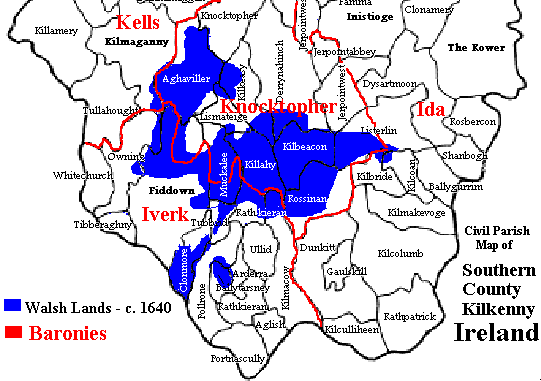 Prior to the confiscation of Catholic lands during Oliver Cromwell's campaign into Ireland from 1649 to 1652, the Walsh families controlled over 19,000 acres in southern County Kilkenny. The major share was held by Robert Walsh, with smaller sections held by Thomas Walsh, Piers Walsh, William Walsh, Richard Walsh and Philip Walsh. In the 1660's Robert Walsh possessed about 5,300 acres by having some of his lands restored. By 1703, the Williamite confiscations took the last 1,675 acres held by Robert Walsh. The map above represents some of the Walsh land holdings. For a more detailed listing, see Confiscations. Source: Kilkenny History and Society A.D. 1835 The most extensive dairies are in the barony of Iverk and principally around the Walsh mountains: this tract has a good depth of soil, much inclined to grass. As late as the close of the last century, the principal family residing in it consisted of five branches, holding among them more than 2,000 acres; they retained a remarkable degree of clanship, and were very comfortable and hospitable. But from the practice of subdividing the land amongst their descendants, the farms have become very small and the occupiers poor. The land, however, is much improved: the chief crops are oats and potatoes, and great numbers of cattle and pigs are bred here. The milch cows are principally fed on potatoes during the summer, and the butter is of a superior quality, and brings a good price both at Waterford and Kilkenny, whence it is exported to England. The pigs are mostly fed with buttermilk and potatoes and grow to a large size: vast numbers are annually shipped for England, and during the season the provision merchants of Kilkenny and Waterford obtain a large supply from the barony of Iverk. Throughout the whole of that part of the barony which is not immediately adjacent to the city of Waterford, the population is more or less connected by ties of consanguinity, rarely marrying out of their own district. Source: Topographical Dictionary of Ireland Further history on the Walsh families in Co. Kilkenny is presented by Rev. William Carrigan in The History and Antiquities of the Diocese of Ossory Two of the principal families of Walsh in County Kilkenny included: Walsh of the Mountain and Walsh of Ballynacooly. The preceding article was compiled by Dennis J. Walsh, © 2009 Further Reference: Walshs in the Early Irish Counties List of 1653 Confiscations The Legacy of Castlehale Mountain Pedigree - descendants of Philip Bretnagh Historical Placenames of the family of Walsh Early Walsh Land Holdings County Kilkenny Genealogy - Ireland GenWeb |
County Kilkenny, IrelandMountain Pedigree #1 (Philip and Howell)There are a number of early family trees which vary as to the origin of the family of Walsh in Ireland. One of the first "Walshs" was said to be Philip Walensis (the Welshman) who was a hero in a naval battle of 1174, slaying the commander of the Danish Fleet, Turgesius, the King (or Mac Turger, son of the King). There are conflicting genealogies for some of the very early Walshs, and this page is a first in a series that explores possible family trees.
The story of Philip as told by Geraldis Cambrensis writing in the late 12th century, "In this
emergency, Raymond [le Gros] was appointed to the command, and the troops recovering
their spirits, made an incursion into the district of Ophelan (Offaly), and carrying of immense
booty, obtained means of being fresh mounted and equipped. From thence they marched
to Lismore, and having plundered both the city and the province, conveyed their spoils by
the coast road to Waterford. With these they freighted some small vessels which had lately
arrived from Wexford, and some others which they found in the port of Waterford. While, however,
they were waiting for a fair wind, thirty-two ships full of armed men came from the city of Cork,
distant about 16 miles westward, for the purpose of attacking them. A naval engagement ensued,
the Irish making a fierce attack, armed with slings and darts, and the English repelling it with
arrows and iron bolts from their cross-bows, of which they had great store. In the end, the men
of Cork were defeated, their leader Gilbert mac Turger, being slain by Philip of Wales, a young
soldier of great prowess. Then Adam de Hereford, who commanded, having increased his fleet
with the ships taken, loaded it with plunder and sailed in triumph to Waterford."
In other versions part of Raymond's men sailed with their booty [from Lismore] into Youghal harbour, but were attacked there by Dermot Mac Carthaigh's vassals, the Ostmen of Cork, whose fleet was commanded by Gilbert, 'son of Turgare', the mor-maer of the city. Philip Walsh was variously said to be a baron of Cornwall and descended from the famous David, King of Wales; also descended as a nephew of Robert FitzStephen; and also as a nephew of Rees Ap Griffith (Rhys ap Gryffyd). It is also claimed that he was a a nephew of Strongbow; as well as a descendant of Cadogan of Bychan (Wales); and a finally as a relative of the Geraldines and Carews. Confusing to say the least! In the genealogies, Philip is said to have married Susanna Lumney, daughter of John Lumney, Earl (Comitus) of Waterford, probably of the McCarthy clan. In other genealogies he is also said to have married Eleanor de Burgh, daughter of Maurice. Of his origin, all appear to agree that he came from Wales between the years 1169 to 1172. In the so-called "official" genealogy by William Hawkins, Ulster King at Arms in 1769, Philip was granted, by Henry II, the lands of Bally-Kilgavan in Queen's County, of Castle Hoel in County Kilkenny, and Grealaghbeg in County Tipperary. In the same year (1172-1174?) he was created Philip lord of Bally Carrickmore in Waterford and baron of Pildom in Tipperary and Shancaher in Kilkenny. After his marriage to Susanna he is said to have received much mountain land, from which the family of Philip is called "of the Mountain" to distinguish it from the family of his brother, David. In 1172, David was created baron of Carrickmaine in Dublin and of John's Cross in Kerry. Philip's son, Howell Walsh, was said to have built (or finished) Castlehale on the northern edge of the Walsh Mountains in county Kilkenny. Howell's name has been variously spelled Hale, Hoel, Hayle(n), Hoyn and Hoyle. Additionally, it has been claimed that Howell was descended from Ralf FitzStephen, the son of Robert FitzStephen who led one of the early campaigns during the Cambro-Norman Conquest of Ireland in 1169. In this light he has been referred to as Hale FitzStephen. Howell is thought to have married a daughter of Raymond le Gros de Carew, another early leader of the Cambro-Norman campaigns; or he possibly married a daughter of Griffin, a brother of Raymond le Gros. Howell's uncle, David "Walsh", was claimed to have married a sister of Raymond le Gros. The Legend of Walsh of the MountainThis family, says Burke, came to Ireland - A. D. 1170 with Strongbow and settled in County Kilkenny where they acquired large possessions, once known as the Walsh Mountains, in the barony of Iverk in said county. These possessions were confiscated during the Cromwellian period and in the reign of William III, after which the elder members of the branch migrated to France and Austria. In France, the title of Count Serrant, still extant, was conferred upon the representative of the elder branch. The first of the family who came to Ireland with Robert FitzStephen at Strongbow's invasion was Philip Walsh, who was called by the Irish, "Brannagh" (or the Welshmen), who in 1174 distinguished himself in a naval engagement against the Danes at Cork by boarding the ship of their commander and slaying his son. The son of that Philip and Eleanor, daughter of Sir Maurice De Burgh, was Hayle Walsh, builder of "Castle Hayle" or "Castlehoel" in the Walsh Mountains. His wife was Catherine, daughter of Raymond le Gros (ancester of the Grace Family). From Hayle Walsh descended many of the families of that name found in nearly all parts of Ireland, and it is a line descended from him that the families of this record are members. From that stock descended the following branches, namely, Walsh, of Castlehoel, in the county of Kilkenny; Walsh, of Ballynecully, in Kilkenny, and of St. Malo, in France; Sir Edmond Walsh, knighted at Christ's Church, Dublin, by Sir Arthur Chichester, Lord Deputy of Ireland, on the 1st June, 1606; Sir Nicholas Walsh, Knt., Lord Chief Justice of the Common Pleas, in Ireland, who died in 1615, and married Mary (d.s.p.), dau. of Sir Arthur Colclough, of Tintern Abbey, county Wexford; Walter Walsh, Dean of Kildare (in 1610), who died 6th April, 1621; Nicholas Walsh, of the Island of Teneriffe (living in 1732), descended from Henry Walsh, of Waterford, brother of Nicholas Walsh, Judge of the Queen's Bench, temp. Queen Elizabeth; Walsh, of Fanningstown, county Kilkenny; Richard Walsh, of Carrickmines; Pierce Walsh, of Kilgobbin, county Dublin, temp. James I., son of John Walsh, and grandson of Pierce Walsh, of same place; John Walsh of Shanganagh, county Dublin; Theobald Walsh (d. 1616), of Killencarrig, county Wicklow; Walsh, of Three Castles, county Wicklow; Oliver Walsh (d. 1621), of Newtown, Dorenore, county Kildare; Nicholas Walsh, of Mooretwon, county Kildare; Rev. John Walsh, of Castledermot, Chancellor of the Diocese of Kildare, in 1624; Walsh of Belcarrow, county Dublin, and of Flanders; Peter Augustus Walsh, of Castle Walsh, county Kerry, living in 1769; Walsh, of Ballykilcavan, Queen's County; Walsh, of Bellevue and Clonmoyle, county Westmeath, etc. [Source: O'Hart, Irish Pedigrees, v. 2 - 1892 ] HAUT DE PAGENote and Synopsis of the Genealogy of Walsh, 1769The following "Note and Synopsis of the genealogy of Walsh (or Wallis)" is translated from the latin text (Transactions of the Ossory Archaeological Society,1883) of a certificate given to two men of the family of Walsh, of the territory of Mac Elligot in Kerry, who were officers in the army of Brandenburg, by William Hawkins, Ulster King at Arms, in 1769. The Austrian Counts Wallis were of the family of Walsh of Carrickmines. For some reason, perhaps having to do with the language of their country of adoption, they elected to represent the old family name "Waleys" as Wallis, rather than Walsh. This translation appears in the book of Joseph C. Walsh, Walsh 1170-1690, publ. 1925. It should be noted there are a number of apparent assumptions, errors and anachronisms contained in the text. The Walshs were called "Waleys" (Welsh), and therefore the name is now written both "Walsh" and Wallis." The first of the name who settled in Ireland were David and Philip Walsh, brothers, barons of Cornwall in England, (descended from the famous David, King of Wales) who with many of the principal nobles both of England and Wales, followed, in 1171, Richard de Clare, Earl of Strongbow and their uncle. Henry II coming to Ireland in the year 1172 created David Walsh baron of Carrickmaine in Dublin and of John's Cross in Kerry. He likewise granted to David lands in Huntstown near Dublin, at Old Connaught in Wicklow, and Abington in Limerick. David married Mary McCarthy, eldest daughter of Justin of Aglias and Sarah Sullivan, receiving with her from her father much land in Kerry, where he erected three castle which may still be seen, called Castle Walsh of Alan, of Cusneen and of Murry, which castles are situated at the foot of Knockatee. From David was lineally descended Thomas John Reymund Walsh, of Carrickmaine in Dublin and John's Cross in Kerry, and dynast of Castle Walsh. Manus, son of David, founded the abbey of Rosbercon and another near Dublin, and enriched them with many lands and ornaments. The said Henry the Second granted to Philip the lands of Bally-Kilgavan in Queen's County, of Castle Hoel in County Kilkenny, and Grealaghbeg in County Tipperary; and the same year created Philip lord of Bally Carrickmore in Waterford and baron of Pildom in Tipperary and Shancaher in Kilkenny. Philip, in 1173, married Susanna, second daughter of John Lumny, Earl (Comitis) of Waterford, and Juliana O'Sullivan, and received from the said John much mountain land, from which the family of Philip is called "of the Mountain" to distinguish it from the family of David. From Philip was lineally descended James Walsh who returned to Scotland with Prince Charles Stuart. From these branches there sprang, and flourished in the Church, the illustrious Archbishop of Cashel and metropolitan of Munster, who was of John's Cross in Kerry and who died for the faith under Cromwell ; Archbishop Walsh of Canterbury in England, who was of Bally-Carrickmore ; and William, Bishop of Meath in Ireland, who likewise died for the faith under Elizabeth. From the time of Elizabeth, and since, the families of both David and Philip were deprived, because of their faith, of the seats they had held in Parliament. The very noble family of Mac Elligot met the same fate under Elizabeth, Cromwell and William, which family parted with all of their lands and possesions on account of the adherence to the profession of the Roman Catholic religion, difference in religion being the only cause of their loss, the family preferring to sacrifice all their property and fortne rather than give up their religion, which was prohibited in those three reigns, and the law being such that few Roman Catholics can hold property. The undersigned Lords, Members of Parliament, Bishops and pastors attest and confirm the foregoing as exact and at all points in agreement with the truth (signatures, titles and testaments follow...). And then William Hawkins, Ulster King at Arms, certifies the descent of Julius Caesar (baptized in 1740) and Peter Augustus (baptized in 1744) Walsh or Wallis, who were at that time, 1769, junior officers in the army of Brandenburg. Following the translation given above, Joseph C. Walsh, in his book Walsh 1170-1690, speculates that if David and Philip were nephews of Strongbow, the relationship may have been through his cousin, Alicia, daughter of Richard of Clare, who married Cadwalader, brother of Owen Gwynned, and therefore uncle of David of North Wales. He goes on to point out an error - the Archbishop of Cashel was not born in Kerry, but in Waterford. He then expresses his concerns that David and Philip were more likely from Wales than Cornwall, that the name Lumney must be a McCarthy as no one other could have granted the Waterford lands, and that if David of North Wales is the intended for the 'famous King David,' any descendant of his at that time must have been his son. And finally, he comments the impression is given that the more the synopsis is tested the more one is disposed to think that as other records are made available its outline may be so expanded as to become coherent history. Additional Notes: There seem to be a number of other issues with the Synopsis. There is no pedigree indicated which confirms the descent of the two individudals born in the middle of the 18th century. Many of the titles given to David and Philip are highly questionably. As one example the title of baron of Carrickmaine is not apparent in any record, the Walshs first noted holding lands at Carrickmines in the year 1400 (although in the area before this). Other references also appear to indicate places where Walshes had acquired properties at later dates, e.g. Huntstown, Ballykilcavan, and Old Connaught. |
 |

|
CLAN WALSH |
 |
 ..Suivra la Glorieuse Révolution qui provoqua en Irlande la deuxième vague importante d'émigration du XVIIe siècle avec la défaite des partisans de Jacques II Stuart surnommés Jacobites, et en 1661, nous relevons la création de la Loge de Darlington à Saint-Germain-en-Laye par les Régiments de Charles II. La Franc-Maçonnerie irlandaise fut la première à émettre, à partir de 1732, des patentes en faveur des régiments de l'armée britannique. Ces loges militaires, considérées régulières, sont rattachées à un régiment ou à une unité militaire dont l'Orient n'est pas fixe et varie en fonction des déplacements de la garnison et ces loges sont exemptées de toute redevance dès 1768. Actuellement, il existe encore quatre loges, dont la plus ancienne est La Loge Saint Patrick 4th 7th Royal Dragoon Guards n° 295 fondée en 1758. Sur les bases du répertoire du Grand Orient de France, l'obédience reconnaît à la loge Parfaite Egalité du régiment irlandais de Walsh (ancienne Loge de Dorrington à l'Orient de Saint-Germain) une ancienneté qui remonte au 25 mars 1688. A. Kervella précise qu'il n'est pas improbable que des militaires se soient très tôt préoccupés de former des loges propres à leurs régiments respectifs, dont une placée sous le commandement d'Arthur of Dillon. Arthur, comte Dillon, né en 1670 dans le comté de Roscommon (Irlande), mort en 1733 est un officier irlandais jacobite passé au service de la France après la seconde révolution anglaise et la chute de Jacques II d'Angleterre. Le régiment de Dillon, qui a donné naissance à la Loge La Bonne Foi à l'Orient de Saint-Germain, était composé de déserteurs de l'armée britannique, en général irlandais. Dillon rappelle dans ses observations : ''Nous affirmons de plus, que du moment que les régiments irlandois se trouvent opposés à des troupes angloises, les Irlandois catholiques, qui sont dans celles-ci, désertent en foule, pour venir rejoindre leurs compatriotes au service de la France. » Nous pourrions citer d'autres Francs-Maçons militaires partisans des Stuarts, tels George Seton et David Nairne (dont la fille a épousé Ramsay), capitaine du Régiment Royal-Ecossais dans les années 1740. Par ailleurs, d'autres loges militaires suivront ce mouvement, dont la loge française La Parfaite Union créée en 1759. …….Est ici brièvement rappelée l'implication d'un armateur corsaire en la personne du célèbre Antoine WALSH, à l'origine de la construction à Nantes d'une frégate nommée «Du Teillay» destinée à rapatrier en Ecosse Charles-Edouard Stuart pour conduire l'expédition de Culloden. Nous relevons à cet effet dans un ouvrage de Patrick Villiers ce qui suit : Antoine Walsh était non seulement au premier rang des armateurs de la place de Nantes, mais il était encore le plus influent comme en témoigne cette lettre du commissaire Du Teillay : « Monsieur Walsh est le plus fort armateur de ce port et je puis, sans partialité aucune, assurer Monseigneur qu'il est le plus intelligent et le plus porter à se presser aux besoins de l'Etat, que c'est lui qui a déterminé nos plus forts négociants à faire bâtir deux corsaires de 36 canons dont l'un a été lancé à l'eau depuis trois jours, qui sera incessamment suivi du second que l'on doit armer le plus promptement qu'il sera possible et qui a engagé le sieur Le Ray à faire la demande des deux frégates dans l'armement desquelles il est un des plus forts intéressés...». La célébrité d'Antoine Walsh est à associer étroitement à celle de Dominique O'Heguerty (cf. boulevard des Jacobites). A l'instar de tous les historiens qui s'appuient sur les textes de certains auteurs, qu'ils soient maçons ou non initiés, écrivains éditorialistes, rapporteurs, nouvellistes, tels que Gustave Bord dans son ouvrage ''La Franc-Maçonnerie en France des origines à 1815'', qui constitue incontestablement une source de renseignements à ne pas épargner, nous reprenons donc ses propos concernant LES LOGES MILITAIRES, tel qu'il les décrit en page 489 et suivantes de son livre précité, parmi lesquelles nous avons retenue celles de Dillon et de Walsh. …..Les Loges militaires ne semblent pas avoir été installées dans les régiments français avant 1759. Il est probable qu'elles ne se sont pas formées spontanément et qu'avant leur organisation officielle à l'Orient des régiments, de nombreux officiers fréquentaient les Loges civiles. Les régiments, en se déplaçant, étaient de merveilleux agents de propagande que la Franc-Maçonnerie n'eut garde de négliger. On créa même, après 1760, des Loges militaires qui n'étaient à l'Orient d'aucun régiment. Ces Loges eurent un rôle important dans le développement de l'Ordre : le nom de la plupart d'entre elles n'est pas parvenu jusqu'à nous. […] Il est curieux de constater qu'aucune de ces Loges ne figure sur les annuaires. De qui tenaient-elles leur pouvoir. D'après les Loges qu'elles ont contribué à installer, il n'est pas douteux qu'elles étaient d'origine ou tout au moins de tendances jacobites ; l'Orient de Bouillon a peut-être aussi joué un rôle plus considérable qu'on ne l'a indiqué jusqu'ici dans le développement de la Franc-Maçonnerie française. WALSH Parmi ces régiments, l'un des plus fameux fut celui de Walsh qui abrita la Loge La Parfaite Egalité. Le Régiment de Walsh avait été levé en 1661 sous le nom de Royal Irish. Il devint le Royal Guards lorsque la garde personnelle de Jacques II se joignit à lui (cf. -entre autres- Charles Porset : Les premiers pas de la Franc-Maçonnerie en France au XVIIIe siècle, Editions Maçonniques de France, Paris 2000). En effet, en 1661, Charles II, à la veille de monter sur le trône d'Angleterre forma à Saint-Germain-en-Laye, un régiment sous le titre de Royal Irlandais. Ce régiment suivit la fortune des Stuarts sous le nom de Gardes Irlandaises. Compris dans la capitulation de Limerick, il débarqua à Brest le 9 octobre 1689, sous les ordres du colonel lord William Dorrington, appelé à remplacer son ancien colonel le duc d'Ormond, qui avait embrassé le parti de Guillaume III. Jusqu'en 1698, il tint garnison à Saint-Germain, sous le nom de Garde Irlandaise, en dehors des cadres français, bien qu'entretenu par Louis XIV. Le 27 février 1698, il fut incorporé dans l'armée française sous le nom de son colonel, qui était toujours lord Dorrington. […] Ce régiment semble avoir eu la plus ancienne Loge reconnue par le G.O. de France. En effet, le 13 mars 1777, le G.O. admit que sa constitution primitive datait du 25 mars 1688, et que cette constitution avait été renouvelée le 9 octobre 1772 par la G.L. de France. Comment fut-elle installée à l'origine et de quelle puissance maçonnique tenait-elle ses pouvoirs ? Elle ne figure sur aucune des listes de Loges reconnues par les G.L. anglaises, et tout porte à croire qu'elle fut formée par la réunion de plusieurs frères, initiés antérieurement qui constituèrent la Loge de leur propre autorité. C'est du reste de cette façon que se formèrent la plupart des Loges françaises antérieures à 1743. Quel était son titre distinctif ? Il est probable qu'elle n'en ait pas eu au début. Je ne relève le titre de Parfaite Egalité qu'à partir de 1752, mais il est possible qu'elle l'ait porté antérieurement. […] En 1788 et 1789, son Vénérable est Walsh, capitaine commandant… Entra-t-elle en sommeil pendant la tourmente révolutionnaire ? Cela est possible, bien que j'aie tout lieu de croire que les Loges persistèrent dans la plupart des régiments, continuant une vie indépendante, sans rapport avec aucun pouvoir central. ROYAL ECOSSAIS, formé par ordonnance du 3 décembre 1743 (Gustave Bord ne fournit pas d'autres renseignement qu'une liste de membres) Le colonel comte de Drummond, duc de Perth, Louis Drummond de Melfort, Colbert Castlehiel, Stuart, David Nairne (cité plus haut),…. ….. Les régiments furent disloqués par les organisations de 1791 et de 1794. En 1791, les régiments remplacèrent leurs noms séculaires par de simples numéros d'ordre et, en 1794, par l'amalgame avec les bataillons départementaux, la plupart des régiments contribuèrent à la formation de deux demi-brigades. Le 23 mars 1801, il se forma au 92e d'infanterie une Loge sous le titre de la Parfaite Union, qui ne semble avoir aucun rapport avec l'ancienne Parfaite Egalité à l'Orient du régiment de Walsh. A cette époque du reste, le 92e n'avait plus aucun lien de sang avec le 92e de 1791. Avant et après Fontenoy, des ordonnances royales pourvurent à la formation de quatre régiments écossais ou irlandais. Il est plus que probable que ces régiments eurent leurs Loges. Celles-ci néanmoins n'ont pas laissé de traces. Parmi les officiers de ces corps, depuis leur formation jusqu'à 1771, je relève les noms d'un certain nombre d'initiés. N.B. Le lecteur intéressé par les Loges régimentaires d'origine écossaise et irlandaise trouvera un travail présenté dans notre onglet « Les chroniques écossoises », intitulé LOGES JACOBITES EN FRANCE, au sujet desquelles Simon Appleton a fait une étude et une compilation des sources historiques prenant référence chez Robert Ambelain et Gustave Bord. |
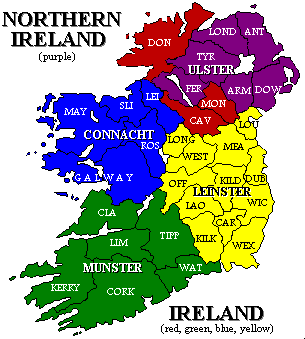
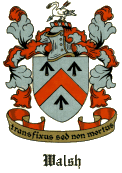 As previously suggested, the Walsh surname in Ireland had its Irish roots in the Welsh and Welsh-Norman families who arrived in the wake of the
As previously suggested, the Walsh surname in Ireland had its Irish roots in the Welsh and Welsh-Norman families who arrived in the wake of the 
